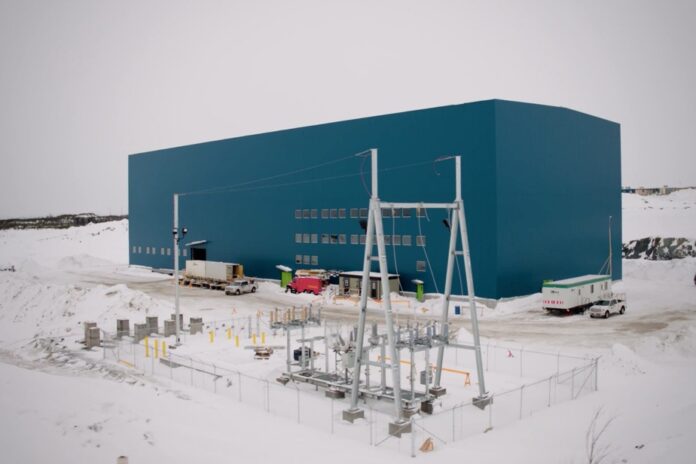Trailing Tesla and the Chinese, many Western automakers are bypassing traditional suppliers and committing billions of dollars to contracts with lithium mining companies.
Wearing helmets and steel boots, automotive bosses visit mines in Chile, Argentina, Quebec and Nevada to secure their supply of lithium, a key metal for electrification.
Without lithium, American and European manufacturers will not be able to manufacture the batteries for the electric pickup trucks, sport utility vehicles (SUVs) and sedans necessary for their survival. The assembly plants they are building in Michigan, Ontario, Tennessee and Europe will shut down.
Established mining companies do not have enough lithium to supply the growing demand. General Motors projects that it will only produce electric vehicles by 2035. According to Kelley Blue Book, quarterly sales of battery-powered vehicles in the United States increased by 45% between March 31, 2022 and March 31, 2023.
So builders race to out-compete others and secure exclusive access to small mines. But this strategy exposes them to the cyclical risks and vagaries of mining, sometimes in unstable countries that do little to protect the environment. If they are wrong, these manufacturers could pay lithium much more than its market value in a few years.
Auto executives say they have no choice: there aren’t enough reliable supplies of lithium, nickel and cobalt to make the batteries for the millions of electric vehicles the world needs.
Previously, automakers let battery manufacturers buy the lithium themselves. But the shortage is forcing manufacturers, who have deeper pockets, to acquire this essential metal directly and send it to battery factories, some of which are owned by suppliers and others, partially or totally, by manufacturers.
In 2022, GM reached an agreement with Livent, a Philadelphia company, which will supply it with lithium from mines in South America. In January, GM committed $650 million to Vancouver-based Lithium Americas to develop the Thacker Pass mine in Nevada. GM won out over 50 bidders, including battery and component makers, said Sham Kunjur and Lithium Americas executives.
Ford has concluded lithium agreements with the Quebec company Nemaska Lithium, the Chilean SQM and the American Albemarle.
“They are world leaders in producing high-quality lithium,” Lisa Drake, vice president of electrical industrialization at Ford, told investors last May.
But dozens of companies are opening mines; ultimately, lithium supply could exceed demand. If global production increases faster than expected, the price of lithium could collapse. It’s already arrived. In this case, the manufacturers will have paid far too much.
Auto executives prefer this risk to the risk of running out of lithium during this critical period: their companies would fall behind impossible to catch up.
Their fears are well founded. In countries where electrification has been fastest, established manufacturers have lost ground. In China, where almost a third of new cars are electric, Volkswagen, GM and Ford have lost market share to Chinese rivals like BYD, which makes its own batteries. Tesla, which has built a lithium supply chain over the years, has steadily gained market share in China, Europe and the United States. Tesla is now the second largest seller of new cars in California, after Toyota.
Lithium is abundant, but not always easy to extract.
Many lithium-rich countries, such as Bolivia, Chile and Argentina, have nationalized their natural resources or imposed exchange controls limiting the amounts that foreign investors can withdraw from the country. Even in Canada and the United States, opening a mine can take years.
So manufacturers send representatives all over the world, often to sites where production has not yet started.
“Some people are a bit desperate,” says Amanda Hall, CEO of Summit Nanotech, a Canadian startup that is working on technology to extract lithium from saline groundwater. Auto bosses are “trying to get ahead of the problem.”
In their haste, builders sign contracts with small mines that risk disappointing. “There are plenty of examples of problem cases,” said Shay Natarajan, partner at Mobility Impact Partners, a private equity fund for sustainable transportation. Overproduction could cause the price of lithium to crash, she adds.
Mining companies are the big winners. Their contracts with automakers provide them with big profits and they can borrow or sell stocks more easily.
Just a few years ago, the price of lithium was low and mining was barely profitable. But today, with the rise of the electric car, mining projects are springing up like mushrooms. Most are in the early stages of development and years away from starting production.
Until 2021, “there was no capital or very short-term capital,” says Ana Cabral-Gardner, co-CEO of Sigma Lithium, a Vancouver-based company that mines lithium in Brazil. “No one was looking at a five- or ten-year horizon. »
The auto industry plays a big role in helping mines get started, says Dirk Harbecke, CEO of Rock Tech Lithium, a future Mercedes-Benz supplier that is developing a mine in Ontario and a processing plant in eastern Germany.
“In my opinion, it’s not a risky strategy,” he said. I think it’s a necessary strategy. »















